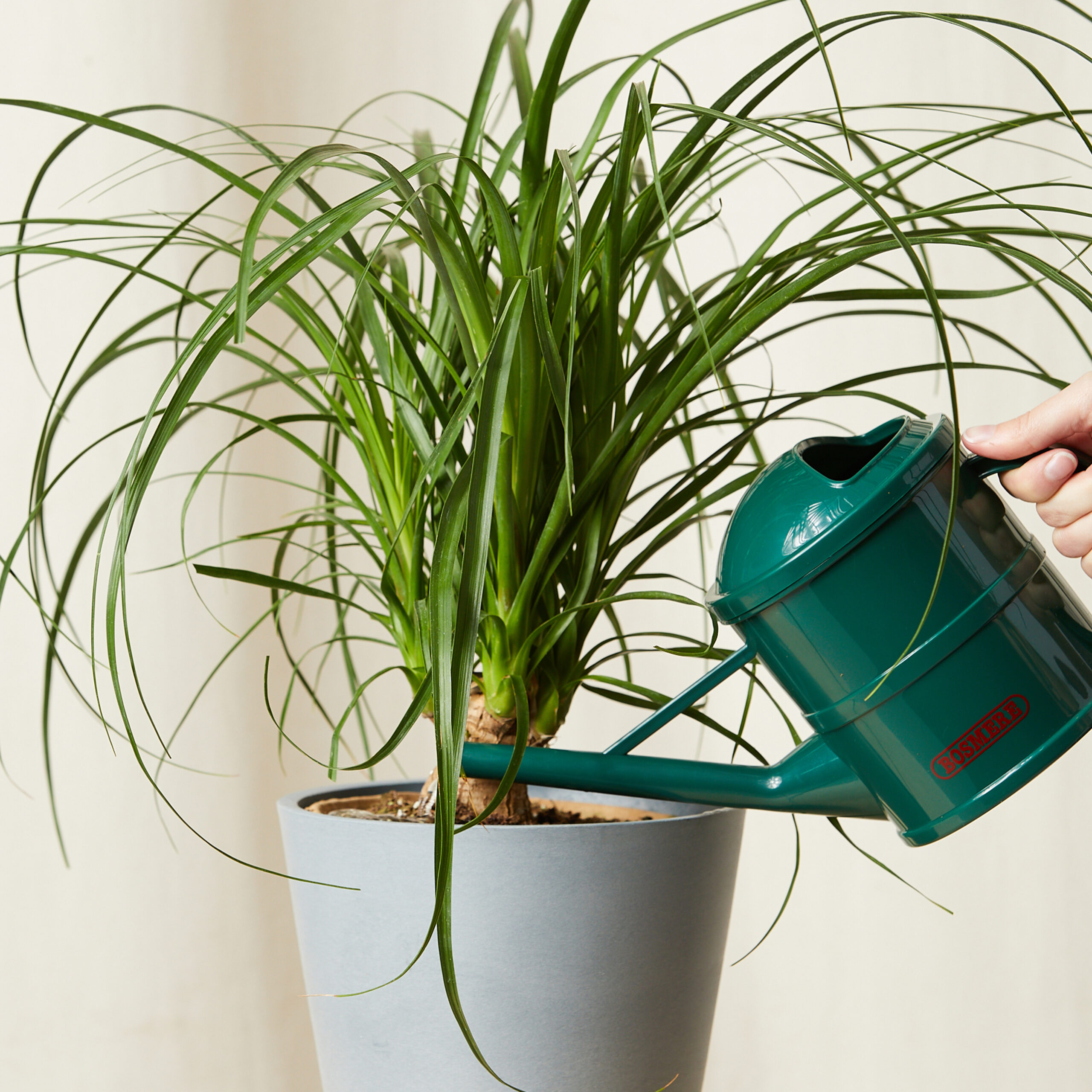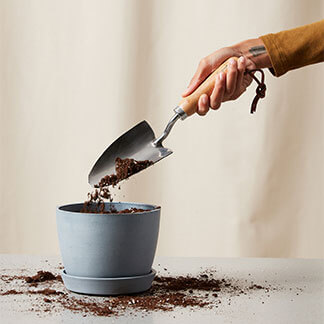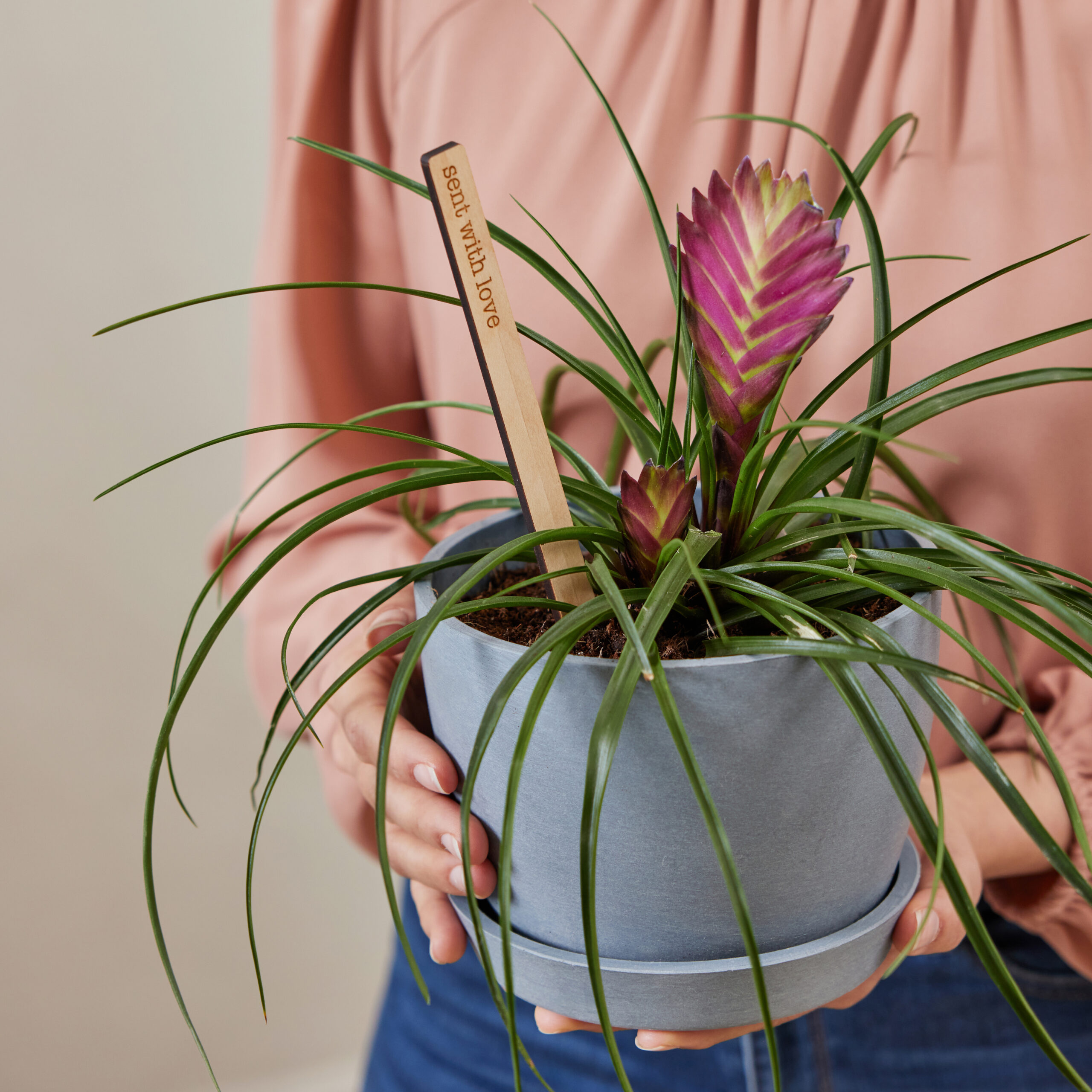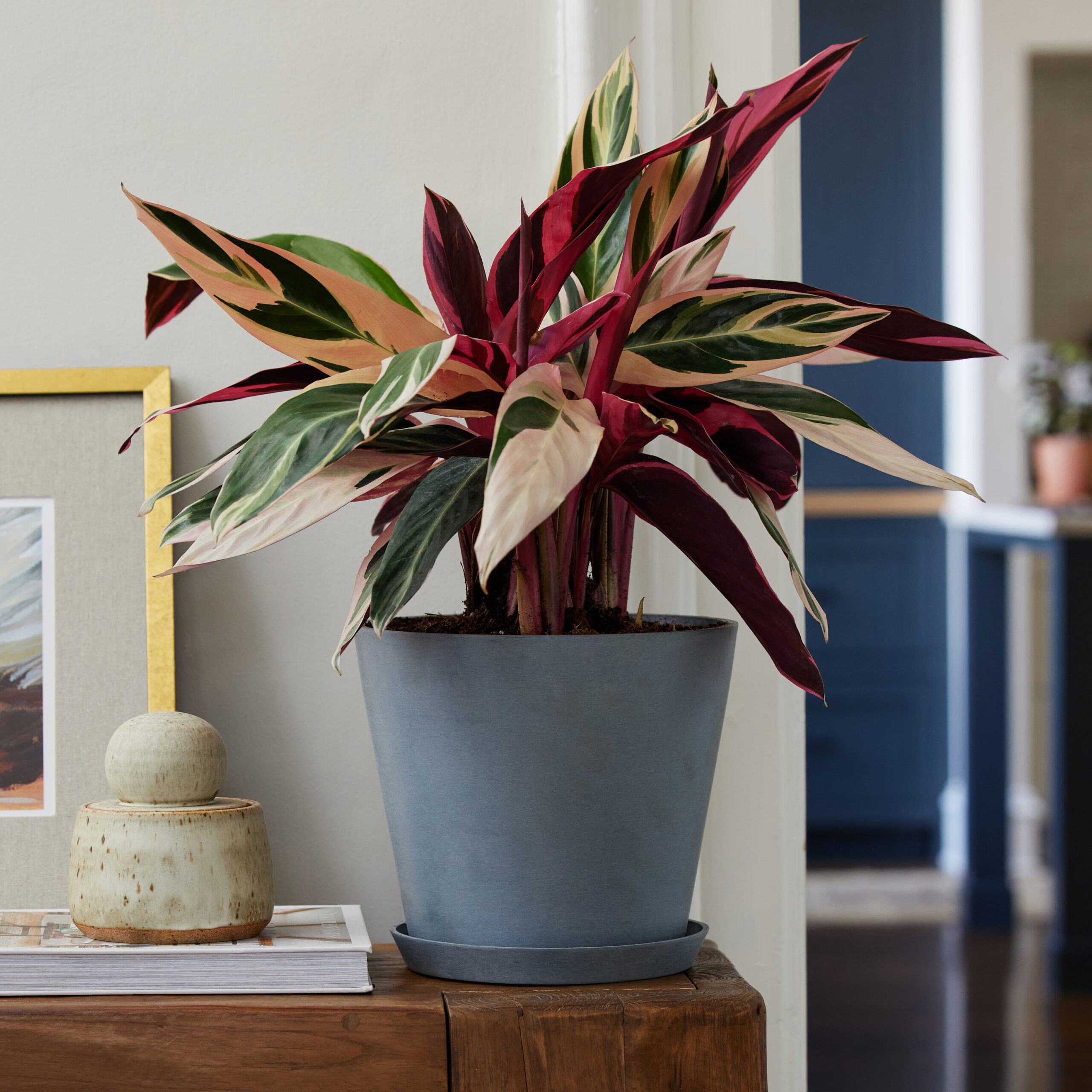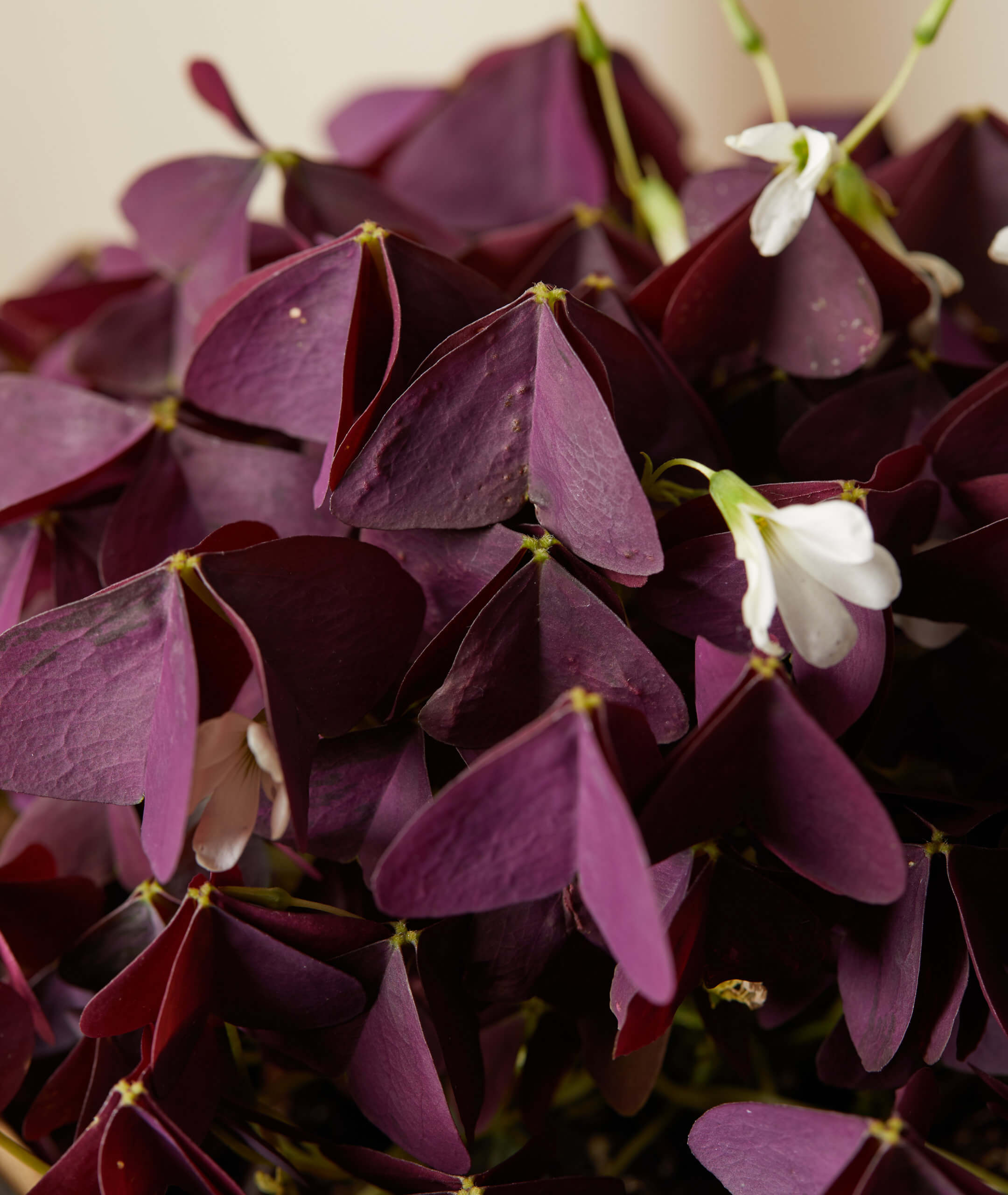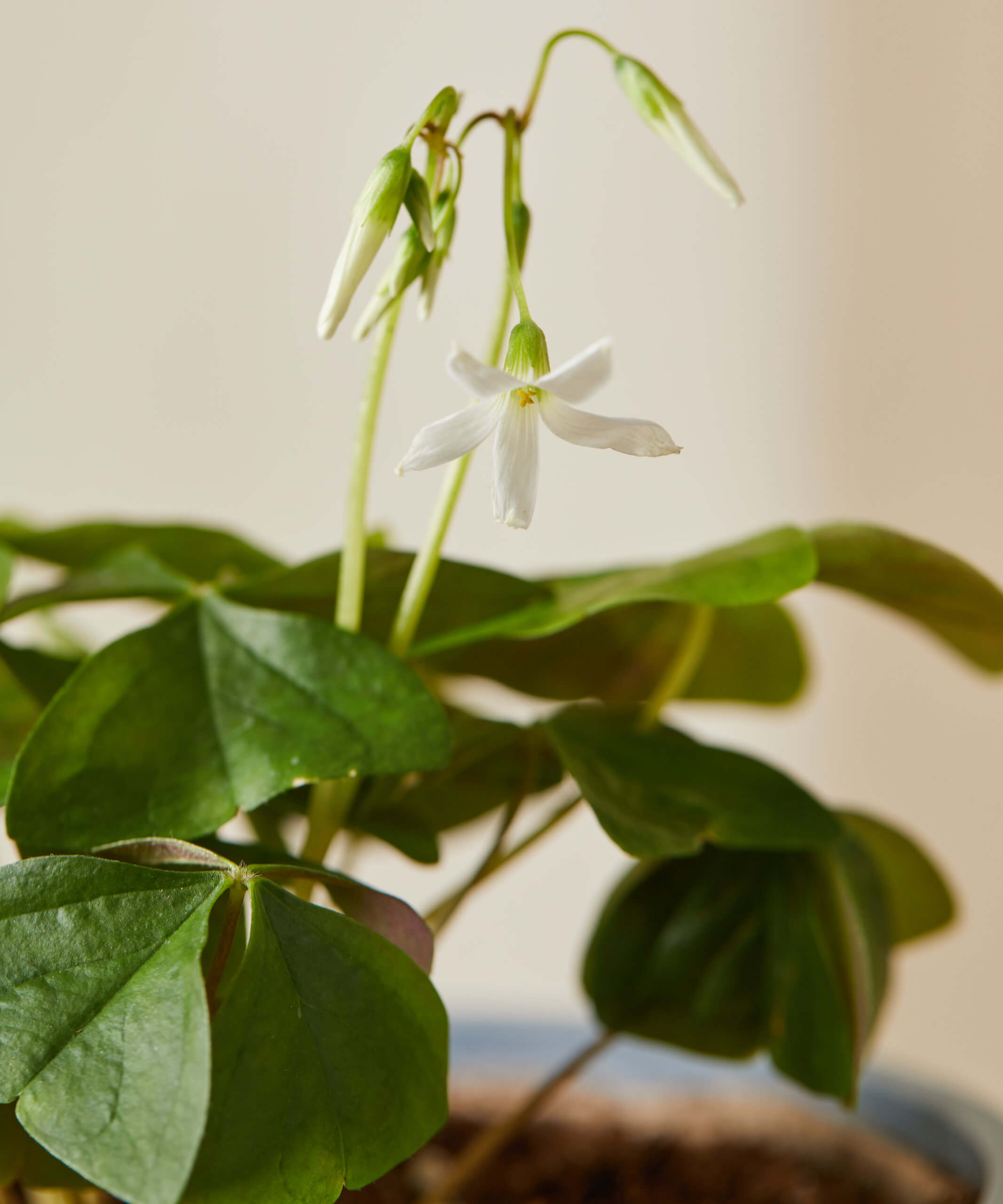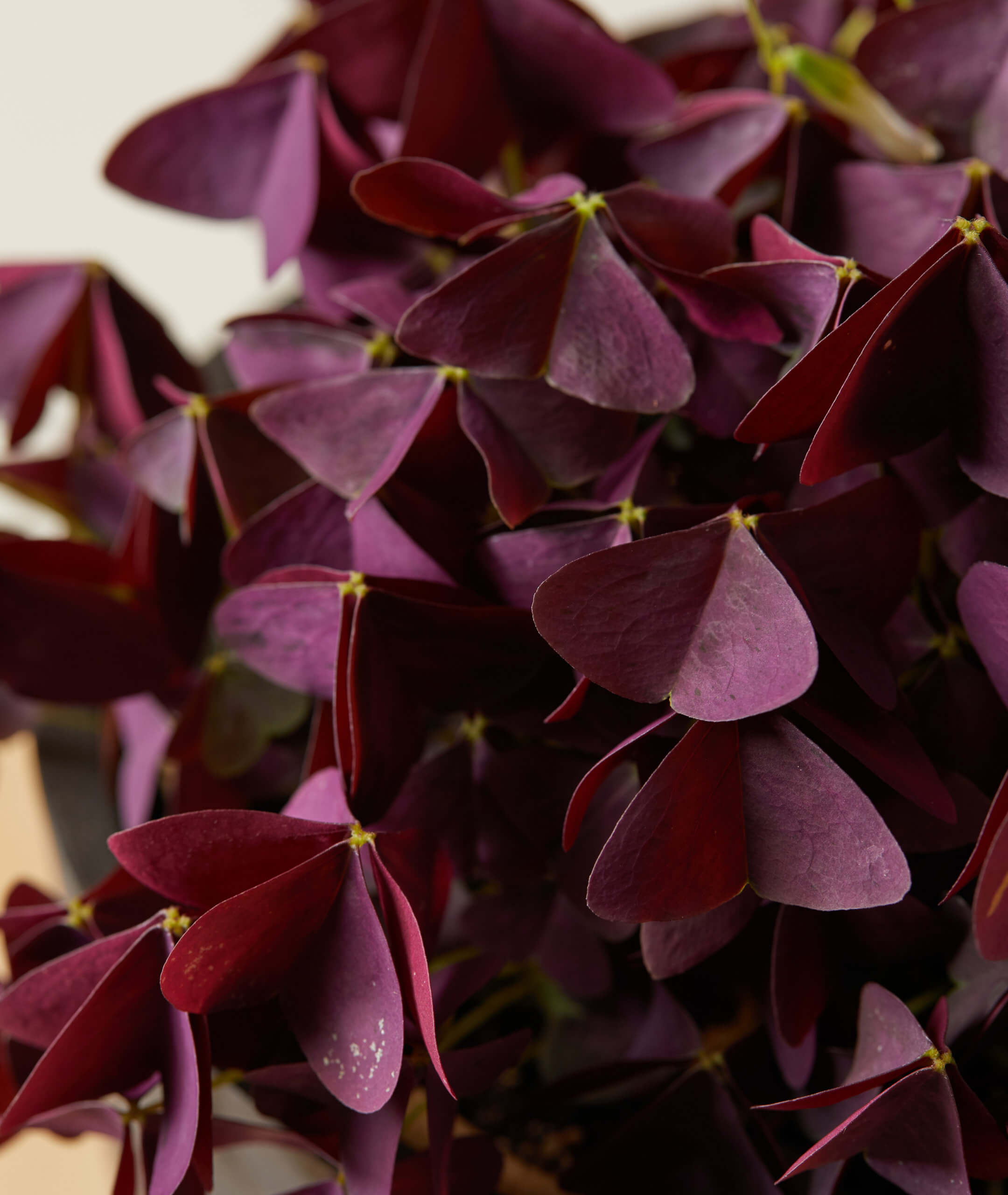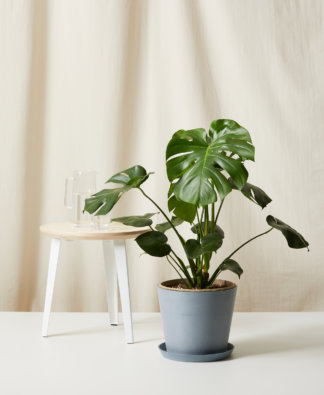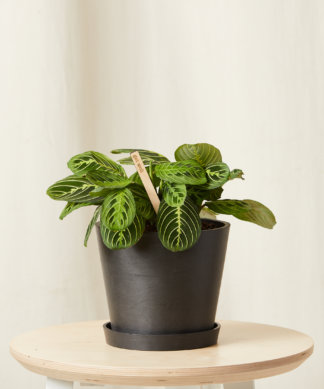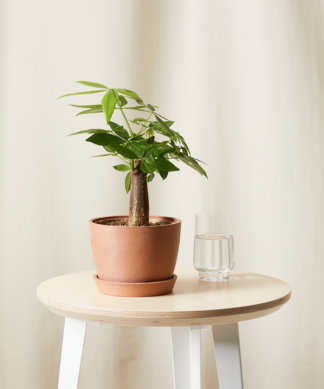How to care for your Oxalis
Use these instructions to care for an Oxalis. This guide will tell you how to water an Oxalis; its light, temperature, humidity preferences and any additional care it might need to help it grow.
Oxalis
Oxalis will do best in very bright indirect sunlight and can handle direct sunlight through a window (preferably filtered). However, if kept outside it cannot handle direct light and must be kept in the shade.
Your Oxalis appreciates fairly dry conditions but also likes a thorough watering every week or every two weeks. However, you’ll need to be careful not to overwater since your plant doesn’t like soggy soil. During the winter, you can cut back on watering to avoid rotting.
Your Oxalis Plant thrives in humid conditions between 40% to 60%. If possible, you might place your plant in the bathroom or kitchen where it would be exposed to moisture in the air. Otherwise, you can place a humidifier in the same room or a pebble tray beside the pot.
Oxalis plants thrive in a warm environment between 60℉ to 75℉. These plants also prefer stable room temperatures without fluctuations. So you’ll need to keep them away from drafts as well as the air conditioner and heater vents.
Feed your Oxalis once a month during spring and summer with an all-purpose houseplant fertilizer, preferably an NPK 10-10-10 formula. You can stop fertilizing once your plant goes into dormancy.
Oxalis is considered to be toxic to humans, cats, and dogs.
Oxalis is unique in that it stores energy underneath the soil in bulbs! If it gets too cold or you forget to water it for an extended period of time, all of the leaves may die back, however, this does not necessarily mean the plant is dead! This plant can revive itself and come back to life and regrow when put back in ideal conditions again.
Green Oxalis
Oxalis will do best in very bright indirect sunlight and can also handle direct sunlight through a window. However, if kept outside it cannot handle direct light and must be kept in the shade.
Water when 50-75% of the soil volume is dry. Water thoroughly until it flows out of the drainage hole. Discard any excess water that accumulates in the saucer to discourage root rot.
Oxalis prefer a humid environment. Mist often, make a pebble tray, or place a humidifier nearby.
Your Oxalis prefers normal room temperatures between 65-75°F. They cannot tolerate hot temperatures above 80°F.
Feed your Oxalis once a month during spring and summer with an all-purpose houseplant fertilizer.
Oxalis are considered toxic to humans and pets if ingested.
Oxalis is unique in that it stores energy underneath the soil in bulbs! If it gets too cold or you forget to water it for an extended period of time, all of the leaves may die back as the plant goes into dormancy. However, this does not necessarily mean the plant is a goner. Thanks to the stored energy, this plant can come back to life when put back in ideal conditions.


